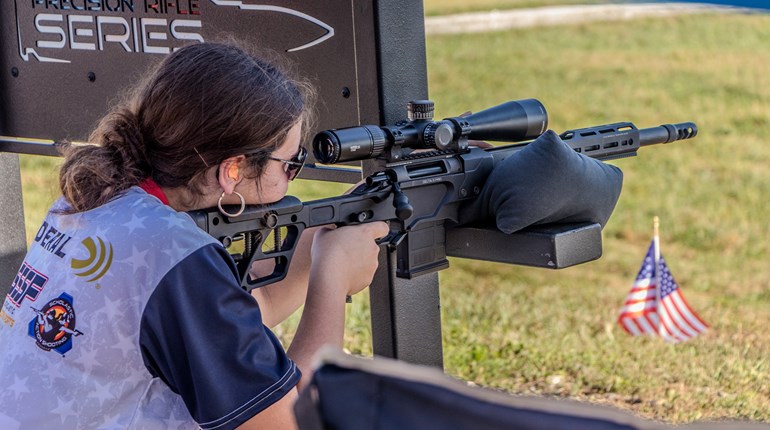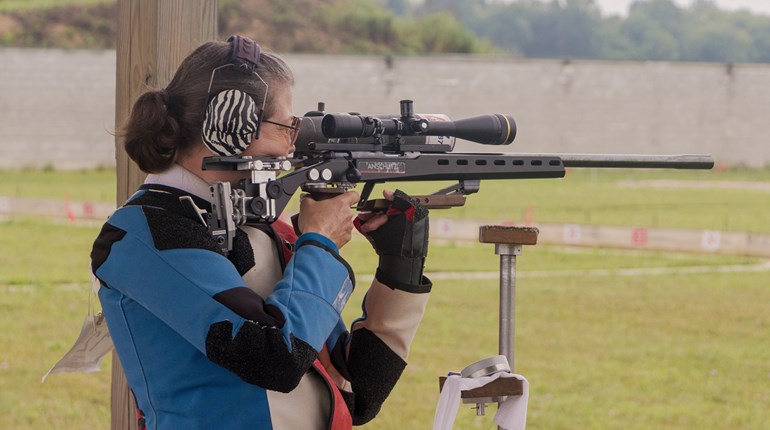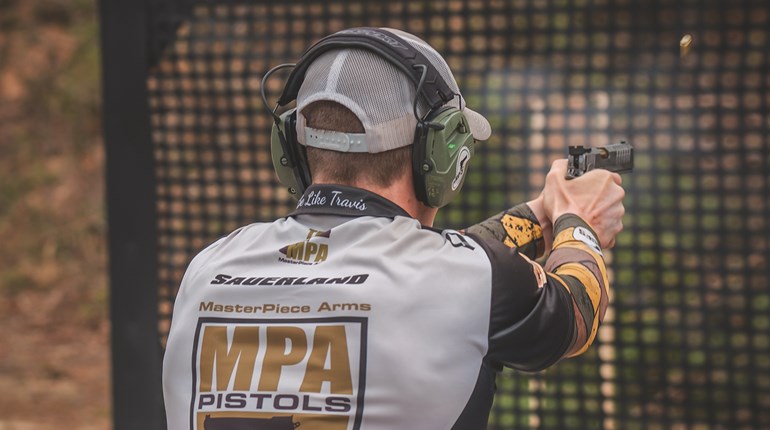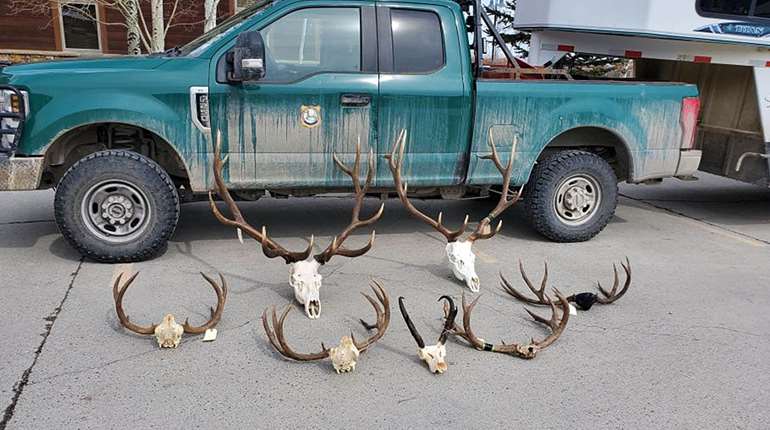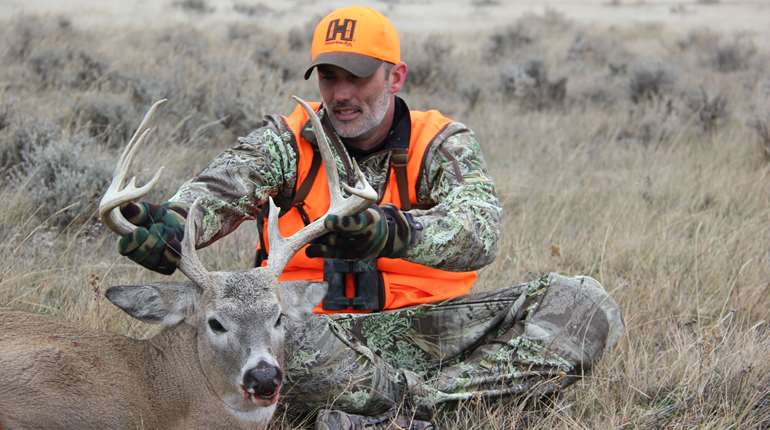
On the elevated, rocky point my iPhone suddenly lit up with one bar of connectivity. Seconds later I zipped an image of the basin below me, with a quick smartphone-editing circle of a brown object at tree line, into the digital universe. Miles away my wife’s phone beeped a notification. My message with the image simply said “done.” Her reply of “you got an elk?” signaled she was as shocked as me over the events that had just unfolded in the Wyoming backcountry on my solo hunt.
Luck no doubt played a role in my opening-morning success, but so did years of ignoring elk myths and simply hunting in a common-sense fashion. I learn new stuff every elk season. This season was no exception; many past ventures into elk country have convinced me that elk do not lead a supernatural existence but simply react to their surroundings in a calculating way of life.
Viewing my elk hunts with this straightforward vision has transformed my hunting style and led to increased success over the years. Believe me, elk hunting still eats my lunch and then some, but removing any mystery about how elk eke out a living exponentially helps the hunt move into more positive territory.
Don’t Wake the Neighbors
As my ATV ground its way up the boulder-strewn trail through the blackest of forests, I smiled (despite the joint-wrenching bouncing) behind my frosty facemask. My smile spread as I passed at least a half-dozen hunting camps that still did not have a twinkling of lantern-lit activity. No lanterns lit meant my extra-early alarm gave me a jumpstart on not only my fellow hunters but also the elk.
Being the first in the woods on any hunt boosts my confidence, especially on public lands. This simple act delivers access to potentially unpressured elk on opening day or even weeks into the season. Arriving before the competition, to stalk elk moving naturally before the masses arrive, sets you up for an opportunity before elk disappear back into sometimes hard-to-hunt forested sanctuaries. Be first in line and you have the first chance. It’s that elementary. I can recall numerous hunts where I was already coming out of an area in the morning, either after a successful encounter or a complete letdown, only to be met by hunters just hiking in. I did not have the heart to tell them the elk disappeared into steep, dark timber even before the sun rose.
Elk in all areas do not pull this disappearing stunt, but pressured, post-rut elk often feed nocturnally unless weather forces them to spend more time accruing calories. In the past six years, five of my DIY, public-land bulls fell before an hour into shooting light. Most were shot just minutes into shooting light as they were already waypoint-targeting steep, deep and dark slopes for a daytime hideout. Even though fog, snow or dense cloud cover could lead to elk spending a few extra minutes in the open, don’t bet on it.
In 2024 I left my camp at 3:30 a.m. and was hiking into my hunting area before 5 a.m. with a plan to be in place an hour before shooting light. I did not meet another off-road vehicle on the trail in and did not see the headlamp of any other hunters. Shooting light was at approximately 7 a.m., and I made it with an hour to nap before showtime. It was quite a show when shooting light arrived.

Read the Elk Tea Leaves
Elk, during the rutting season and even into the post-rut transition, are noisy. As herds assemble for the winter ahead, the joining of family groups and harems creates cow chatter. Young bulls, previously shunned from harem life, have no aversion to trumpeting bugles across the landscape while faking herd dominance. If you do not hear those sounds, especially at dawn and dusk, you may not be in the vicinity of elk. Time and time again I have argued with hunting companions, usually during the main rut, that if we do not hear elk there might not be elk around.
The debate centers around hunters believing elk simply go quiet—and I concur this happens—but when cows come into estrus, in September or possibly again in mid-October, bull elk find it difficult to put a sock in it. They need to bugle a message of authority. Mature bulls living a post-rut lifestyle begin to shun the bugle conversations, but they still have not learned to erase other clues of their mountain attendance schedule. As the rut fades along with bugle banter, keep looking for the signs.
Rather large at 500 to 1,000 pounds per critter, elk leave ample clues as they clomp across the landscape. Tracks stand out as the main clue to scan for as you hike through an area. Snow offers the best substance to read the tea leaves of tracks, but mud, dry dirt and sand all provide readable material for tracking. Crisp and distinct outlines of tracks tell a story of recent activity as opposed to weathered hoofprints in melted snow, or unclear outlines that display degradation from days of exposure.
If tracks prove difficult to uncover, fresh droppings provide a second or backup clue to elk in the neighborhood. Be a poop inspector. Fresh elk droppings appear shiny and may even include a vivid, or green color depending whether vegetation has gone dormant. A good sniff also aids in determining freshness. Dried-out droppings may smell, but not with the same intensity as a recent dump. Not rocket science, but bull droppings are larger and wider whereas female droppings retain that round, pellet nature.
Prior to my 2024 hunt, a scouting trip revealed little sign in my favorite honey hole that produced three bulls for me in past seasons. More than 1,000 feet higher, the tea leaves told me where to start my hunt. Sign was everywhere, and that’s where I planned to be opening morning.
Don’t Alarm the Elk
The iconic image of elk hunting portrays a hunter, either on horseback or backpacking, moving from basin to basin in search of an elk herd. This approach has worth, but once you stumble across elk or find consistently fresh sign, consider an ambush approach. It’s awfully difficult to stalk into elk, particularly in dark timber, but elk are grazers, and save for a few unique environments most grazing takes place in the open. Be there waiting.
How long you wait depends on sightings or the repeated occurrence of new sign. Elk do move, especially pressured post-rut bulls. However, with a stealthy approach to an area you might be able to capitalize on a pattern. One fall while I hunted high-elevation basins, occasional snow revealed tracks of elk feeding in the lush bowls, but I quickly deduced it was under the cover of darkness. Luckily, a fast-moving snowstorm spurred the elk into a feeding frenzy that lasted 10 minutes too long as the storm passed at dawn. It was the missing element I needed to put my sights on a mature 6-point intent on one last bite before bedding.
One issue arises with waiting in ambush at a potential hotspot: the vastness of the West. Several of the areas I have discovered as ambush locales honestly are too large to cover from one ambush location. One day the elk may be feeding at one end of a valley and the next visit you may stumble into them the second you enter the parkland.
When I hunt an area with distances exceeding my comfortable shooting range it becomes a game of roulette. Half of your tactical decisions arise from scouting and prior experiences. Half merely come from gut instinct. As you map out a wait-and-see plan, also analyze the terrain for ways to cut the distance if you do need to move closer. The timber edge, a creek bank or rolling swales all give you the cover you need to make a move. But make it fast. Elk, especially bulls, rarely linger for long in the open after shooting light.
Last season I knew from preseason scouting and years of hunting the area where the elk preferred to feed was on an open slope that inclined to a trickling creek and eventually into heavy timber. I also knew that bulls often spent time on a higher slope with an equally thick parcel of adjacent timber for sanctuary bedding. If they were in the open, a flip of the coin would be needed to determine high ridge or low creek bottom. My gut feeling said low. My gut was about to get a high-five.
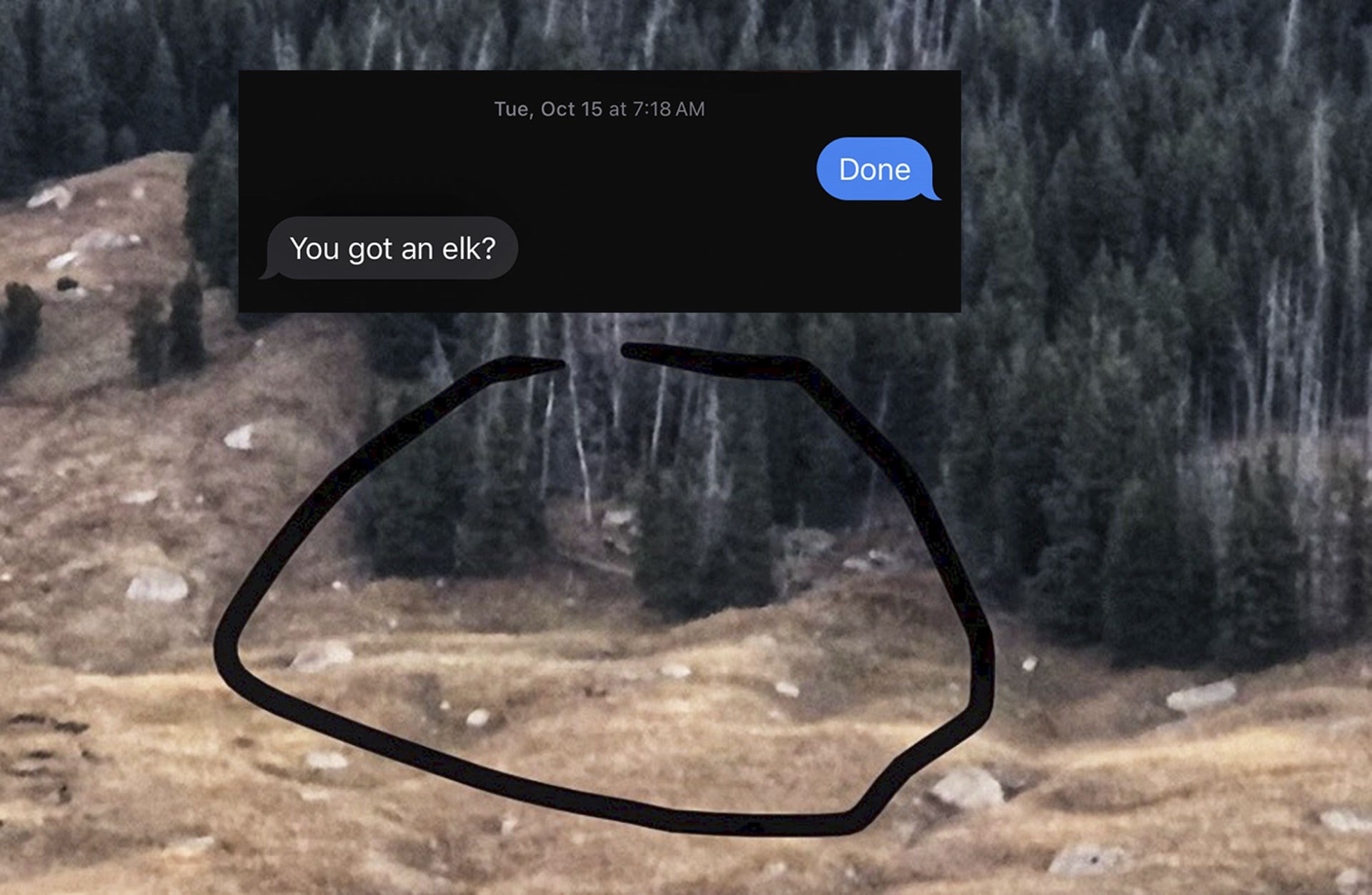
… But They Can Smell in the Dark!
You probably picked up on my fondness for early-morning starts. My bride hates it when I’m home. Marriage bliss and getting ahead of the hunting competition aside, my penchant for darkness leads to my next myth-buster. Elk cannot see in the dark. What I have learned about elk and other game is they do not see as well in the dark as you might believe. Yes, most wild species have better night vision than us, but they still would not fare well against SEAL Team Six equipped with the latest generation of night vision.
As a disclaimer, moonlit nights and especially moonlit nights with a white blanket of snow do not count. These circumstances light up the elk world at night so well that many times I do not even turn a flashlight on under such conditions. On the other extreme, moonless and overcast nights find a soft spot with me. Get the wind in your face, hug or skim through the edge of timber and you can walk right into a herd of elk before shooting light. This Dark Knight move put me into a situation I could never have imagined last fall.
After arriving at the dark trailhead, I looked to the west and saw the nearly full moon disappear behind a shroud of heavy clouds. It was unexpected as the forecast foretold a sunny day ahead. Ignoring AccuWeather, I hiked along an elk trail to a series of meadows ahead. Now the big question hit me: Do I hold up at the first opening, move to a creek bank a third of the way in or bust a move entirely across the feeding area to reach a high point bulls relish? I chose the creek bank. I might bump an elk in the first few hundred yards, but from experience, I knew most of my elk encounters took place from the creek and beyond. A bull skeleton from 2021 success would keep me company at the overlook.
Before leaving the timber, I layered up and did not use my headlamp. I knew the terrain well and found a well-known rocky ledge where I could wait prone. After chambering a cartridge, I grabbed a 30-minute power nap. A half-hour before shooting light I awoke in shock to see two elk that appeared to be sparring well within shooting range! Scanning in the dim light, I soon counted at least a half-dozen elk, and all appeared to be bulls, from their behavior. I’d walked right into an elk jamboree!
About 10 minutes before shooting light, a particularly large-bodied elk caught my attention, and I soon could detect antlers, barely. It was bedded amongst scattered bushes. Another bull fed nearby. Without question, even in the scarcely discernible lighting conditions, these were the two largest bulls in the dark basin.
Suddenly, the standing, larger bull walked toward the bedded bull and the bushes came alive! Those bushes were bedded cows now leaping to their feet. The bedded bull rose to his feet and charged the other bull, sending him fleeing, leaving no doubt who was the patriarch. During the intense encounter, the minutes had ticked into shooting light.

Thinking ahead earlier, I had already ranged every elk around me. The herd bull was 340 yards away, and when enough cows separated from him I knew it was now or never. Any minute now, more hunters could stumble into the elk utopia bestowed on me. I pressed into my Bergara 7mm PRC for steadiness and slowed my breaths. My first shot appeared low, so I followed up for insurance. That shot showed me that what appeared to be a low shot was dust kicking up from behind the bull from an exact hit. Both of my CX bullets hit their mark and, surprisingly, the herd mingled around the fallen bull due to the suppressed nature of the shots.
After glassing the fallen bull to confirm it was down for good, I hiked a few feet higher for a connectivity moment to share my unexpected luck with my wife as noted in the opening. Finally reaching the fallen bull, I was stunned at his impressive rack and even more impressive mature body. He was huge! Another elk season closed with even more substantiation that elk do not lead a supernatural existence. You just need to apply common sense and expect body aches mixed in to achieve the satisfaction of a successful DIY, public-land hunt.
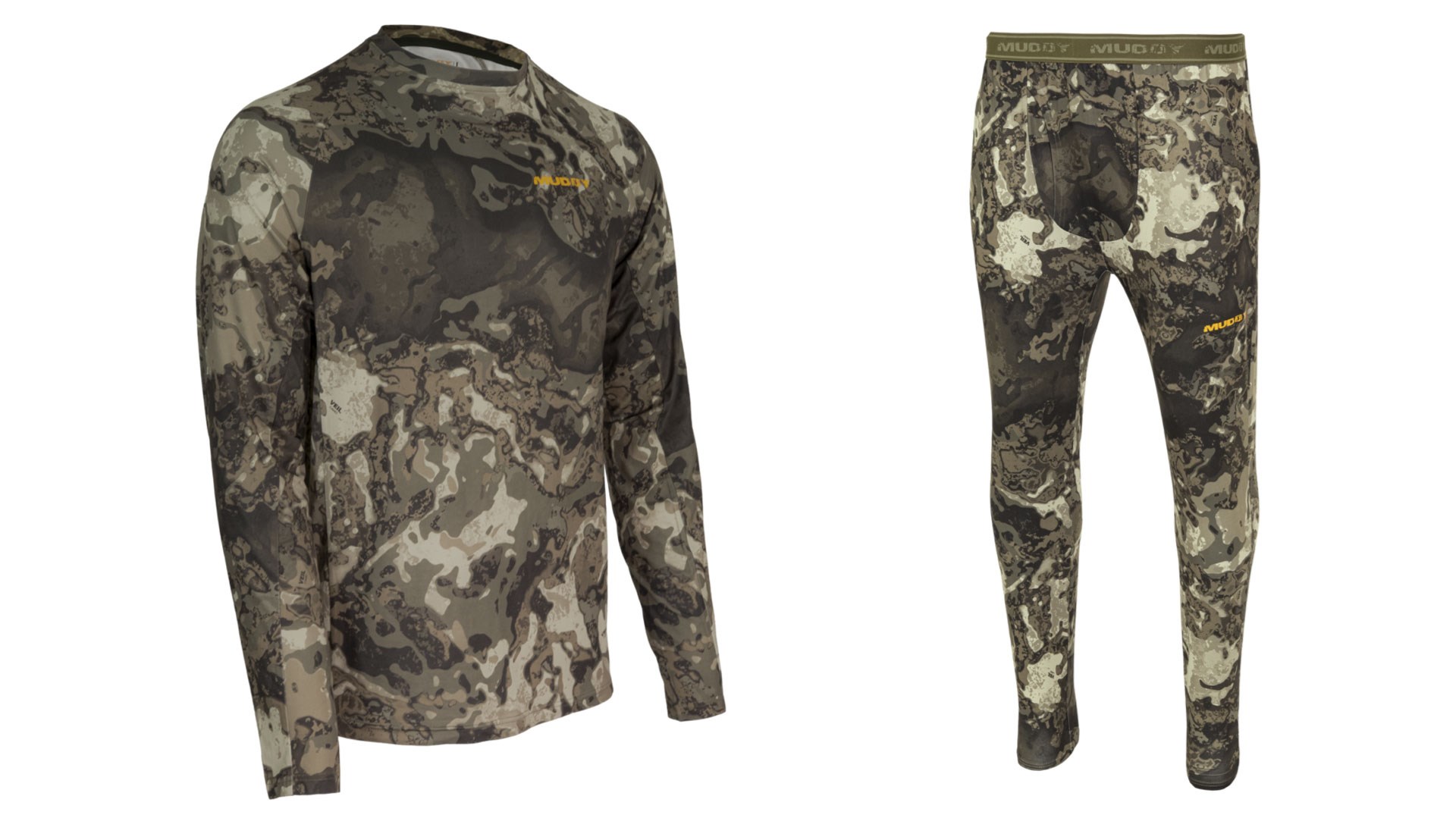
Muddy TRX Hunting Apparel
My body hates change. When I change from hiking to sitting, I get hypothermic. When I change from sitting to hiking, I sweat like an Arizona roofer in July. To avoid the extremes, I layer and sometimes so often my hunting partners become annoyed. Fortunately, I hunt solo most of the time.
Muddy’s new TRX hunting apparel lineup may have a hint of whitetail focus, but it works for all pursuits in all terrain. During my 2024 elk hunts, I experienced everything from 60 degrees to subzero windchills and everything in between. For my October and November rifle elk hunts I utilized the Muddy Base Layer Bottom and Crew Top with a poly-base soft fabric infused with graphene. I had to look it up too: Graphene is a one-atom layer of carbon arranged in a hexagonal pattern intertwined into the garment. It offers unprecedented thermal conductivity and strength. Both base layers are lightweight, wick moisture and are stitched for articulation freedom.
For bottoms, I chose the TRX Lightweight Pant with polyester construction. The focus is on motion with articulated knees along with a tapered leg design. When the temperatures dipped my choice was the TRX Softshell Pant that included reinforcement in the seat and knees and windproof, water-resistant protection.
Lastly, for top layering I combined the TRX Hoodie, TRX Softshell Jacket and the TRX Softshell Vest. These came on and off as body heat, or lack thereof, commenced. The jacket played an important role (unless true raingear was needed) as it was also windproof and water-resistant, a needed element to trap body heat. gomuddy.com













